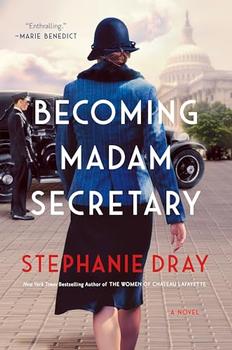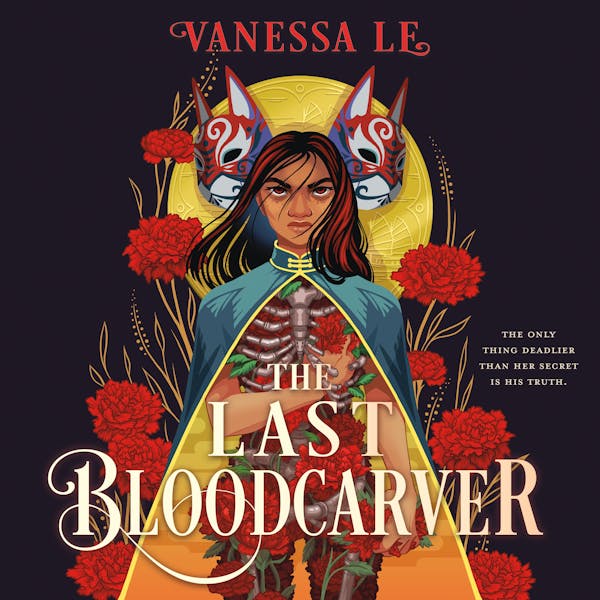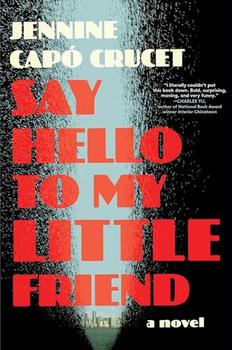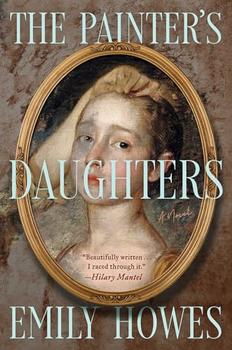A Conversation with Marie Benedict and Victoria Christopher Murray about the extraordinary life of Bella da Costa Greene, which they bring to life in The Personal Librarian
What about Belle da Costa Greene's story made it necessary to write?
MB: In general, I am a writer on a mission—to excavate from the detritus of the past the most important women of history and bring into the light of present day their world-altering contributions and the insights from the very modern issues with which they struggled—and my ultimate goal is to change the lens through we view not only the past but the present. I first encountered the main character in The Personal Librarian when I was a lawyer in New York City, and I'd retreat to the Morgan Library as a place of refuge and sanctuary when I was frustrated with the career, which I knew wasn't my calling. While there one day, a docent mentioned The Personal Librarian to J. P. Morgan, Belle da Costa Greene, and I became fascinated with this woman who became one of the most powerful people in the art world, although there was very little information available about her at that time. When I decided to focus exclusively on historical fiction about women, Belle was always on my list of women I wanted to write about. But until I met Victoria, I didn't feel ready to delve into a book about her, because at the core of Belle's identity is her decision to pass as white even though she was a "colored" woman who'd been raised by a prominent advocate for racial equality in our country. And she rose up to prominence at a time of racism so rampant she likely would not even have been allowed entrance into the very institution she ran. I knew I needed a partner of color to tell the story with me, and Victoria has become more than a partner—she's a sister.
VCM: Honestly, I'd never heard of Belle da Costa Greene until my agent brought me the proposal from Marie. But the moment I heard about her, I wanted to tell her story. I wanted people to know her contributions. I wanted people to know that behind that incredible Morgan Library was a woman...a Black woman who I didn't want to be lost inside history.
Tell us about some of the research you did for the book. What was your most surprising discovery?
MB: The book required an enormous amount of research into the following topics: (1) the life and legacy of Belle da Costa Greene, (2) the life and legacy of J. P. Morgan and his son Jack, (3) the life and legacy of Richard Greener, (4) the life and legacy of Bernard Berenson, (5) the art and rare book world in the early twentieth century, (6) the history and creation of the Morgan Library, (7) the Gilded Age of New York high society, (8) the rise of suffragism and bohemian culture in the early twentieth century, (9) the general political realm in America in the early twentieth century, (10) the sociological and cultural context of the decision by African Americans to pass as white in the first half of the twentieth century, and most of all, (11) the racial landscape in the post–Civil War, post–Reconstruction America, focusing particularly on the rise of white supremacy and the Jim Crow laws as well as the movement toward equality. For me, the most surprising discovery was the insidious, rampant, and far-reaching tentacles of racism and segregation throughout the entire time period from the book—from the early 1900s through the 1940s. Each time I read about a lynching or a terrible piece of Jim Crow-esque legislation, I was horrified and devastated by the cruelty that proliferated during the whole of Belle da Costa Greene's life, leaving me even more in awe of Belle's accomplishments. And the danger inherent in the life she led.
VCM: Marie was the primary researcher for the book because historical fiction is her expertise. But I learned so much from her. I read An Illuminated Life, the biography of Belle da Costa Greene, and then I went searching deep into the Internet following one article after another. The most surprising thing that I found was that there were people who questioned Belle's ethnicity and some accused her of being Cuban. We put that reference in the book.
The Personal Librarian gives readers a deep look into Belle's career as well as her inner life. How did you bring together her inward thoughts and emotions for the book?
MB: Only by working together—discussing every scene, examining every character, studying the historical context—do I believe Victoria and I were able to delve into the inner life of Belle da Costa Greene. I could never have done it alone, and I would have never tried. How could I? Victoria's generosity and trust in sharing her personal experiences with race and her family's history with passing and racism gave me a very different lens through which to view the past and imagine Belle's existence. When we then came together to envision Belle and her private thoughts and feelings, Belle came to life.
VCM: That wasn't too much of a challenge for us. I think it was so important that her story was told from the eyes of a white woman and a Black woman. I knew what Belle was thinking; I knew what she was feeling because of the stories I'd been told by my grandmother and other people who had passed.
What was your favorite true story about Belle that you included in the book?
MB: Belle's life was rife with almost unbelievable encounters, friendships, and events, so much so that her daily existence is nearly unimaginable. Consequently, it's challenging to narrow it down to one favorite true story. That said, I found myself to be particularly proud of Belle's success in the spring of 1911 in purchasing the rare William Caxton edition of Thomas Malory's Le Morte Darthur at the Hoe auction. In securing this book, she achieved the seemingly unreachable goal that J. P. Morgan had set out for her, and she did so in the face of fierce competition in a much-anticipated and heavily watched auction. This prize forced her to face one of her greatest fears—the publicity she worried would reveal her deepest secret, her "colored" identity. Buying this particular Caxton at this particular auction meant that she'd have to face the press head-on, and while she was a celebrity in her own right, she'd successfully avoided intense journalistic scrutiny so far. But she rose up proudly and triumphantly to accept both her prize and her recognition—thereby securing at least one facet of her legacy.
VCM: I don't know if there is one particular part of the story that is all true. We weaved truth with fiction on every page. For example, my favorite storyline in the book is the sexual tension that was between J. P. Morgan and Belle. Now, we don't know that; we weren't there. But that storyline came from a statement Belle did make when someone asked her if she and Mr. Morgan had ever had an affair. Her response: "We tried." So we took the truth of those words and ran with it. That is one of my favorite storylines that runs throughout the book.
What were some of the best vignettes that you had to leave on the cutting room floor?
MB: Again, because Belle's day-to-day life was so extraordinary, there were countless vignettes and intriguing tidbits of information that we could not include in the book, for fear that readers would not find the story believable! Some of the best nuggets we left out include: (1) details about her friendships with well-know women of her day such as the actress Sarah Bernhardt, the dancer Isadora Duncan, and the writer Gertrude Stein, (2) information about her alleged affairs with several men as well as her supposed engagements, (3) the rumors about her purported romantic relationships with women, (4) the fact that she had her portrait done by many fine artists including Paul Helleu, William Rothenstein, and even the legendary Henri Matisse, (5) any specifics about the "nervous collapses" to which she was occasionally prone, although we certainly allude to her drinking issues, (6) her interest in Catholicism that sparked during the time period of the book but really developed in her latter decades as a corollary to her close friendship with Father Hyvernat with whom she collaborated on the Coptic manuscripts' restoration, and last but certainly not least, (7) her role as a surrogate parent to his sister Teddy's son, Robert Leveridge, which she took over when her sister remarried after her husband died in World War I.
Despite the fact that there are many flashy and often incredible tidbits we omitted from the book, one intriguing, not-quite-as-showy vignette is my particular favorite. In 1909, on a week away with friends, she encountered John D. Rockefeller at a resort in Hot Springs, Virginia. They'd met before, but they connected on this trip, talking for hours about business and their origins, although Belle undoubtedly altered hers quite a bit. As part of their gallivanting during that week, Rockefeller taught Belle how to drive a car, something she'd longed to learn how to do and a skill she relished using for the rest of her life. I particularly like this one specific tale because, while it is incredible to think of Belle being taught to drive by the famous Rockefeller himself, it isn't something she ever talked about as far as we know, except in a single letter to Bernard Berenson. For her, it was just another day in the life of Belle da Costa Greene, which only reveals how astonishing her life really was.
VCM: We took out something that was important in Belle's life, but we would have had to develop it so much more that it could have been its own story. Belle's younger sister Teddy had a child that Belle eventually raised. There is so much to that relationship and he passed away at a relatively young age. I would have loved for that to be part of this story.
Do you relate to Belle in any way?
MB: While I cannot fully imagine what it must have been like to walk in Belle's shoes, certain aspects of her life felt awfully familiar to me. That lonely, isolated sensation of being the only woman in the room—a feeling Belle experienced every day at the Morgan Library, at art auction houses, and in meetings with her colleagues as she was one of a handful of professional women in her field and the only one operating at her level—is one I am well acquainted with from my early days as a young lawyer at large law firms in New York City. In conference rooms, courtrooms, mediations, and meetings, I was often the only woman and treated as such; while this has changed today, when I first entered the legal field at that level, women were scarce, particularly in partnership and leadership roles. In addition, as someone who certainly pretended at several aspects of my existence—not the least of which was pretending at embracing a career as a lawyer—I identified with the weight of inauthenticity that Belle was forced to carry every day of her life, although, of course, my burden was far less than the one Belle shouldered.
VCM: Yes!!! I relate to Belle just as a Black woman. I've never passed, of course, but I imagine that when Belle walked out of her apartment every day, she had to put on an act. She had to live in a world that didn't fully accept her. More than one hundred years later, I feel the same way.
What do you think is Belle da Costa Greene's legacy?
MB: I believe that Belle left a vast indelible imprint upon the art world in the first half of the twentieth century in her taste, her erudition, and her expertise. But she did much, much more for the larger population by building up the phenomenal collection at the Morgan Library and ensuring that it—not only its unparalleled assemblage of rare books, manuscripts, drawings, prints, and ancient artifacts but also its status as a major cultural center for fine art, literature, and music—became a public institution, available not just to the wealthy and the scholarly but to individuals and organizations everywhere. The number of people who have been inspired, influenced, and educated by the legacy she left us with the Morgan Library is incalculable. Yet Belle's legacy could have been—and still could be—vaster still if her full background and identity had been known and accepted during her lifetime and in the decades beyond. Just imagine how
much Belle herself could have galvanized people and changed perspectives, even racist ones, if it became known—then and now—that the collection of one of our country's greatest cultural benefactors had been assembled by a brilliant African American woman who instigated its status as a public institution.
VCM: I think Belle should be given credit for the hashtag #BlackGirlMagic. She survived and thrived in a white man's world. She did it with class and grace and built that library to a preeminent place that is still standing.
Victoria, what was it like to write a historical fiction novel after publishing so many contemporaries?
VCM: At first, I was a little intimidated by not only the language, but how were people supposed to communicate without a dang telephone? Ugh! Then, I embraced it and grew to love it. I had to research what a living room would look like, or what appliances were in a kitchen, or how in the world did you tell your girlfriend you wanted to meet up for beers on Friday. I love historical fiction now and I think my readers may be surprised at some of my future work.
Marie, what was it like finally writing a book that you've been thinking about for so long?
MB: It has been a gift beyond anything I could have anticipated, in part because of the wonder of Belle's life and legacy and in part because of the astonishing friendship and kinship I now share with Victoria, a relationship that truly altered how I see race in our country.
What was your cowriting process like for this book? Also what did you gain from writing The Personal Librarian together?
MB: When I think of us writing this book, I remember the two of us on Zoom for hours on the editing process, talking through the details and arc of Belle's life and deciding how we'd tackle the different editorial tasks necessary for each scene while racism and white supremacy unspooled throughout our country. From the confrontation unfolding in Central Park between Amy Cooper and Christian Cooper to the horrific death of George Floyd and spread of the Black Lives Matter movement, together we watched a critical, epiphanous moment unfurl in American society—and we talked about all of it. With candor and trust, we looked directly at this terrible moment together and I, at least, saw it all so differently through Victoria's eyes; I could no longer see the world we inhabit without wondering how Victoria sees it, how it affects her. For me, it was utterly transformative, and I realized how little I knew about the struggle and how removed I had been, how protected by own white privilege I really was. And how much I had to learn and how much I had to do. Then we would dip back into Belle's world only to see the same sort of racism and white supremacy as we were seeing in our own time—recognizing the parallels and concluding that, in both eras, racism surged when the promise of equality mounted. And we realized how change was imperative and how necessary it was that we use this book to help facilitate that change. The writing process and our relationship was life-altering and certainly transfigured our book and our Belle.
VCM: Cowriting this was one of the best experiences of my life, and I don't mean just my writing life. First, I learned so much from Marie about writing historical fiction (and sticking to deadlines, which are normally just suggestions for me!). I'd done collaborations before, so I kind of led Marie through that part. We had become fast friends, with a lot in common and that made it easier to write together, too—because we like each other and felt safe enough to say what worked and what didn't work. But then Marie and I were taken on some kind of...I don't even know what to call it...an emotional awakening. We were doing the edits during the early days of the pandemic and when the streets of America erupted with social unrest. Marie and I talked every day, not only about the book, but about what happened in the news that day. The world was moving fast and it was so amazing to talk to my "white sister" about this. And Marie was just as eager to hear my thoughts. Every single day, I had a safe place to talk about racial issues with someone who didn't look like me. Like I said, one of the best experiences of my life—and many of the things we discussed ended up on the pages of this book. And what did I gain? A sister for life!
What do you hope readers will take away from reading The Personal Librarian?
MB: We hope that Belle and her story have the capacity to make people think, discuss, and perhaps, change. Sometimes the distance of history can help people see things that are occurring in our own world—throwing them into bold relief, in a way—and it is a dream of ours that The Personal Librarian can help guide people toward a fresh, even revolutionary, way of thinking and acting about race. That said, we recognize, in part, that our metamorphosis occurred as a result of the special friendship Victoria and I share, and consequently, we hope that, somehow, we could gather people together—white, African American, and other people of color—to read and discuss The Personal Librarian, replicating even a little of our own experience. Perhaps if people were brought together in book clubs or otherwise to process Belle's story together and the inequality and racism of her world and then witness how Victoria and I were able to bridge the gap between us by honestly and plainly discussing the issues inherent in the book and in our society—issues so often shied away from—then we might be able to make a bridge toward change and get one step toward the equality about which Belle's father, Richard Greener, wrote and for which he fought.
VCM: I hope they will get to know Belle as well, but I'm really hoping that readers can have the experience reading that Marie and I had writing together. Belle lived in two worlds — Black and white. She brought those worlds together, which is why Marie and I came together to write this story. I'm so hoping some readers will seek out other readers and have that experience.
Unless otherwise stated, this interview was conducted at the time the book was first published, and is reproduced with permission of the publisher. This interview may not be reproduced or reprinted without permission in writing from the copyright holder.




The longest journey of any person is the journey inward
Click Here to find out who said this, as well as discovering other famous literary quotes!
Your guide toexceptional books
BookBrowse seeks out and recommends the best in contemporary fiction and nonfiction—books that not only engage and entertain but also deepen our understanding of ourselves and the world around us.